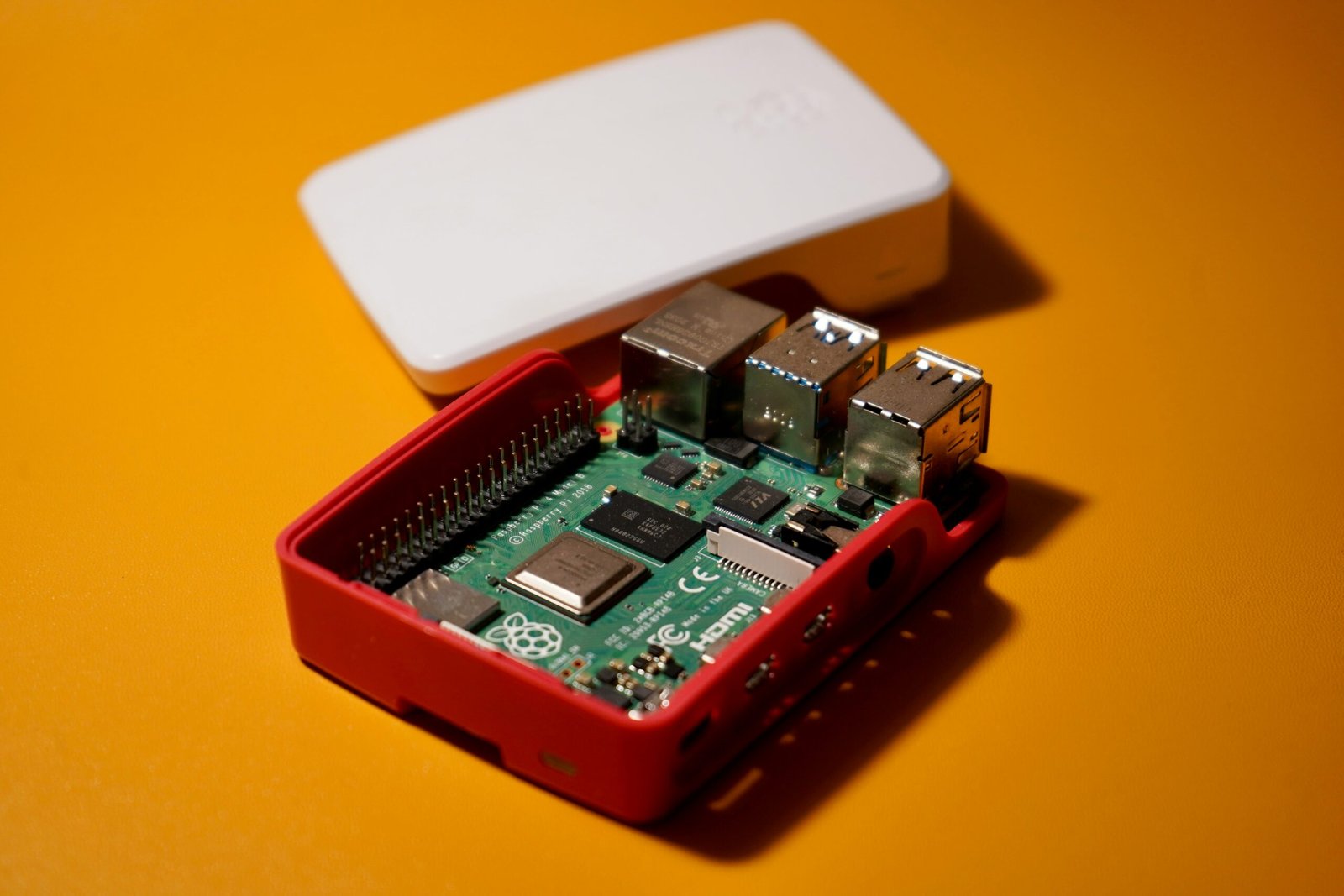Optimizing Intune Mobile Device Management Profile for Mobile Phones: Best Practices and Recommendations
Introduction to Intune Mobile Device Management
In today’s rapidly evolving digital environment, ensuring the security and compliance of mobile devices is paramount for organizations. Microsoft Intune, a comprehensive mobile device management (MDM) solution, plays a crucial role in this regard. By leveraging Intune, organizations can effectively manage and secure their mobile devices, ensuring that sensitive data remains protected and accessible only to authorized users.
Mobile Device Management is essential for maintaining organizational security. With the increasing prevalence of remote work and the use of personal devices for professional purposes, the potential risks associated with unprotected mobile devices have grown exponentially. Intune addresses these challenges by providing robust security features that help prevent data breaches, unauthorized access, and other security threats.
One of the primary benefits of using Microsoft Intune is its ability to streamline device management for IT administrators. It enables them to enforce security policies, manage software updates, and monitor device compliance effortlessly. Intune’s cloud-based architecture ensures that administrators can manage devices from a centralized location, reducing the need for on-site IT support and minimizing operational overhead.
For end-users, Intune offers a seamless experience by allowing them to use their mobile devices without compromising security. Features such as single sign-on (SSO) and multi-factor authentication (MFA) provide an added layer of security while maintaining user convenience. Additionally, Intune’s self-service capabilities empower users to perform basic troubleshooting and device management tasks independently, reducing reliance on IT support.
In conclusion, Microsoft Intune serves as a vital tool for organizations aiming to enhance their mobile device management. By providing a secure, efficient, and user-friendly platform, Intune helps organizations maintain compliance, protect sensitive data, and ensure a smooth user experience. As we delve deeper into the best practices and recommendations for optimizing Intune MDM profiles, it is essential to recognize the foundational role Intune plays in modern mobile device management.

Setting Up Intune for Mobile Device Management
Setting up Intune for mobile device management (MDM) requires careful planning and adherence to specific prerequisites to ensure a smooth and secure implementation. Before diving into the setup process, it is crucial to verify that you have the necessary licenses and administrative permissions. Intune requires an appropriate Microsoft 365 subscription that includes Intune or an Enterprise Mobility + Security (EMS) license. Additionally, ensure that you have the role of Intune Service Administrator or Global Administrator within your organization.
Once the prerequisites are met, the next step is to create a new MDM profile. Begin by logging into the Intune portal and navigating to the “Devices” section. From there, select “Enroll devices” and click on “Create profile.” You will be prompted to choose between multiple platform options such as iOS, Android, and Windows. Select the platform that corresponds to the devices you intend to manage.
After selecting the appropriate platform, configure the basic settings for your MDM profile. These settings include naming the profile, setting up device compliance policies, and configuring enrollment restrictions. Naming the profile clearly and descriptively will help in easy identification and management in the future. Device compliance policies should be tailored to your organization’s security requirements and might include password policies, encryption settings, and device health checks. Enrollment restrictions, on the other hand, can be used to limit the types of devices that can be enrolled, thereby enhancing security.
The final step in the setup process is enrolling the devices. This can be done manually or automatically depending on the scale and needs of your organization. For manual enrollment, users will need to download the Intune Company Portal app on their devices and follow the prompts to complete the enrollment process. Automatic enrollment can be configured through Azure Active Directory (Azure AD) by enabling automatic MDM enrollment for devices that are joined to Azure AD.
Ensuring a seamless and secure setup of Intune for mobile device management involves careful preparation and execution of these steps. By adhering to these best practices, organizations can effectively manage and secure their mobile devices through Intune.
Recommended Security Settings: PIN Code and Screen Lock
Configuring robust security settings is a critical aspect of optimizing Intune Mobile Device Management (MDM) profiles for mobile phones. One of the primary security measures is the enforcement of PIN code requirements. To enhance security, it is advisable to set a minimum PIN length of at least six digits. Additionally, incorporating complexity requirements, such as alphanumeric characters, can further strengthen the security of mobile devices. This reduces the risk of unauthorized access while maintaining user convenience.
Another essential security setting within Intune involves screen lock configurations. It is recommended to enforce a screen timeout period that balances security with usability. Typically, a timeout duration of 5 minutes of inactivity is effective in safeguarding sensitive information without overly inconveniencing users. Implementing an automatic lock after the specified timeout ensures that the device is secured when not in active use.
Moreover, configuring the lock screen to display minimal information is crucial. By limiting the display of sensitive notifications or personal data on the lock screen, the risk of data exposure is significantly reduced. Users should be encouraged to customize their lock screen notifications to show only essential information, such as calendar events or weather updates, while hiding personal messages and email previews.
To further enhance security, consider enabling biometric authentication methods, such as fingerprint or facial recognition, as supplementary measures to the PIN code. These methods provide an additional layer of security and can expedite the unlocking process, thereby improving the user experience.
By adopting these recommended security settings for PIN code and screen lock within Intune, organizations can effectively protect their mobile devices against unauthorized access and data breaches. Ensuring that these configurations are consistently applied across all managed devices will contribute to a more secure and compliant mobile environment.
Implementing Biometrics for Enhanced Security
Biometric authentication has emerged as a pivotal element in fortifying mobile security. Utilizing features like fingerprint and facial recognition, organizations can elevate the security standards of their mobile devices. Enabling and enforcing biometric settings through Intune is a streamlined process that ensures robust authentication without compromising user convenience.
To begin with, administrators can configure biometric settings within the Intune console. By navigating to the device compliance policies, it is possible to mandate biometric authentication for accessing corporate resources. This can include setting up fingerprint or facial recognition as a prerequisite for device unlock. These policies not only enhance security but also simplify the user experience, as biometrics are faster and more convenient than traditional passwords.
When implementing biometrics, it is critical to consider fallback options. While biometrics provide a high level of security, there may be scenarios where biometric sensors fail or are unavailable. In such cases, ensuring that users have an alternative method of authentication, such as a PIN or password, is essential. This dual approach maintains security while accommodating potential technical issues.
User education is another cornerstone of successful biometric implementation. Administrators should ensure that users are well-informed about the benefits and proper usage of biometric authentication. Providing clear instructions on setting up and using biometric features can significantly reduce user resistance and promote adherence to security protocols.
Best practices for using biometrics involve regular updates and maintenance of biometric data. Periodic re-enrollment of biometric data can help in maintaining the accuracy and reliability of the authentication process. Additionally, organizations should stay abreast of advancements in biometric technologies and update their policies accordingly to leverage new security features.
In summary, integrating biometric authentication through Intune enhances mobile security by providing a seamless and efficient way to protect sensitive data. By enforcing biometric settings, offering fallback options, and educating users, organizations can achieve a balanced approach to mobile device security.

Application Management: Recommended Apps to Install and Allow
Effective application management is crucial for ensuring productivity and security in an organization. When optimizing Intune Mobile Device Management (MDM) profiles for mobile phones, it is essential to carefully select and manage the applications that will be installed and allowed on managed devices. Here, we outline a curated list of essential applications and provide guidelines on configuring app permissions and managing app updates through Intune.
For productivity, it is recommended to install applications such as Microsoft Teams and Outlook. Microsoft Teams is a powerful collaboration tool that supports chat, video conferencing, and file sharing, thereby facilitating seamless communication among team members. Outlook, on the other hand, is indispensable for managing emails, calendars, and contacts efficiently. Integrating these apps into your Intune MDM profile can significantly enhance organizational productivity.
In addition to productivity apps, security applications play a vital role in safeguarding sensitive data. It is advisable to install mobile security solutions such as Microsoft Defender for Endpoint, which provides advanced threat protection and comprehensive security management. Additionally, including a VPN application like Microsoft Tunnel can ensure secure remote access to corporate resources.
Configuring app permissions is another critical aspect of application management. Intune offers granular control over app permissions, allowing administrators to specify which permissions are granted to each app. This can be done by navigating to the “App Configuration Policies” in the Intune portal and defining the necessary settings for each application. By carefully managing app permissions, organizations can mitigate security risks and ensure compliance with corporate policies.
Managing app updates is equally important for maintaining the security and functionality of managed devices. Intune enables administrators to schedule and automate app updates, ensuring that all applications remain up-to-date. This can be configured by accessing the “App Update Policies” section in the Intune portal and setting the desired update schedule. Regular app updates help to address vulnerabilities and improve app performance, thereby enhancing the overall user experience.
By thoughtfully selecting and managing applications, organizations can optimize their Intune MDM profiles for mobile phones, resulting in a secure and productive mobile workforce.
Configuring Microsoft Teams and Outlook Installation from the Play Store
Ensuring the seamless installation and optimal functionality of Microsoft Teams and Outlook on mobile devices is crucial for maintaining productivity and communication within an organization. Configuring these apps through Microsoft Intune involves several key steps that focus on not only the installation but also on updates, configurations, and data security measures.
First, to configure the installation of Microsoft Teams and Outlook, sign in to the Microsoft Endpoint Manager admin center. Navigate to Apps > All apps, and select Add. Choose the Managed Google Play app option and search for Microsoft Teams and Outlook. Select the apps and approve them for your organization’s use. Once approved, assign these apps to the appropriate user groups or devices by selecting Assignments and choosing the necessary groups.
Next, to ensure that Microsoft Teams and Outlook remain up to date, configure the automatic updates policy. Go to Devices > Compliance policies > Create policy. Select the platform (Android), and under the Settings tab, choose Update settings. Enable automatic app updates to ensure that all users receive the latest features and security patches without manual intervention.
For app configuration settings, navigate to Apps > App configuration policies > Add and select Managed devices. Choose the platform and select the configuration profile for Microsoft Teams and Outlook. Here, set up required configurations, such as enabling notifications, defining the calendar sync settings, and configuring sign-in options to streamline the user experience.
Finally, data security within these apps is paramount. To achieve this, apply app protection policies by going to Apps > App protection policies > Create policy. Select the platform and configure settings that control data transfer, restrict copy-paste actions, and enforce encryption. These measures ensure that corporate data remains secure even if the device is compromised.
By following these steps, organizations can effectively manage the installation, configuration, and security of Microsoft Teams and Outlook on mobile devices, thereby enhancing productivity and safeguarding sensitive information.
Ongoing Management and Monitoring of Mobile Devices
Proper management of mobile devices using Intune Mobile Device Management (MDM) does not conclude with the initial setup. Continuous and meticulous oversight is paramount to maintaining security, compliance, and optimal performance. One crucial aspect of ongoing management is the consistent monitoring of device compliance. This involves regular checks to ensure that all enrolled devices adhere to the established security policies and configurations. Tools within Intune allow administrators to generate compliance reports and identify devices that deviate from the prescribed standards.
Handling non-compliant devices is another critical responsibility. Once a device is flagged as non-compliant, prompt action is necessary to mitigate potential risks. Intune provides mechanisms to notify users of non-compliance and offers remediation steps. Administrators can enforce policies such as limiting access to corporate resources or remotely wiping the device to protect sensitive information. These measures ensure that non-compliant devices do not become a vulnerability within the organization.
Regularly updating security policies is essential to address evolving threats and organizational changes. Administrators should periodically review and revise policies to incorporate new security measures, software updates, and compliance requirements. This proactive approach helps in safeguarding mobile devices against emerging risks and ensures that the MDM profile remains robust and effective.
User feedback plays a crucial role in the continuous improvement of the MDM profile. Engaging with users to gather insights about their experiences and challenges can highlight areas for enhancement. Feedback mechanisms, such as surveys and support tickets, provide valuable data that can inform policy adjustments and feature updates. This iterative process fosters a user-centric approach to mobile device management, ultimately leading to a more secure and efficient environment.
In summary, ongoing management and monitoring are vital components of a successful Intune MDM strategy. By focusing on device compliance, addressing non-compliance promptly, regularly updating security policies, and incorporating user feedback, organizations can ensure that their mobile devices remain secure, compliant, and optimized for performance.
Conclusion and Best Practices Recap
To effectively manage and secure mobile devices, leveraging Microsoft Intune is crucial. Intune offers a comprehensive solution for Mobile Device Management (MDM), ensuring that organizational data remains protected while maintaining device usability. By implementing the best practices discussed, IT administrators can optimize their Intune configurations to enhance security and streamline management.
First, it is essential to enforce strong security policies. This includes setting up stringent password requirements, enabling encryption, and configuring conditional access policies. These measures help protect sensitive data from unauthorized access and potential breaches.
Next, app management should be a focal point. Deploying and managing applications effectively can prevent the use of unapproved apps that may pose security risks. Utilizing app protection policies ensures that corporate data remains secure even when accessed through mobile applications.
Regular monitoring and compliance checks are also vital. By continuously reviewing device compliance and health, IT administrators can quickly identify and address any security issues. Automated compliance policies within Intune can facilitate this process, ensuring that devices remain in line with organizational policies.
Additionally, keeping abreast of the latest Intune updates and security trends is crucial. Microsoft frequently releases updates that enhance Intune’s capabilities and security features. Staying informed about these advancements enables IT administrators to leverage new functionalities and improve existing configurations.
In conclusion, securing mobile devices through Intune involves a multi-faceted approach that includes robust security policies, effective app management, continuous monitoring, and staying updated with the latest trends. By following these best practices, IT administrators can ensure a secure and efficient mobile device management environment, ultimately protecting organizational data and enhancing productivity.
For more articles related to technology, please browse around InnoVirtuoso and find more interesting reads.






